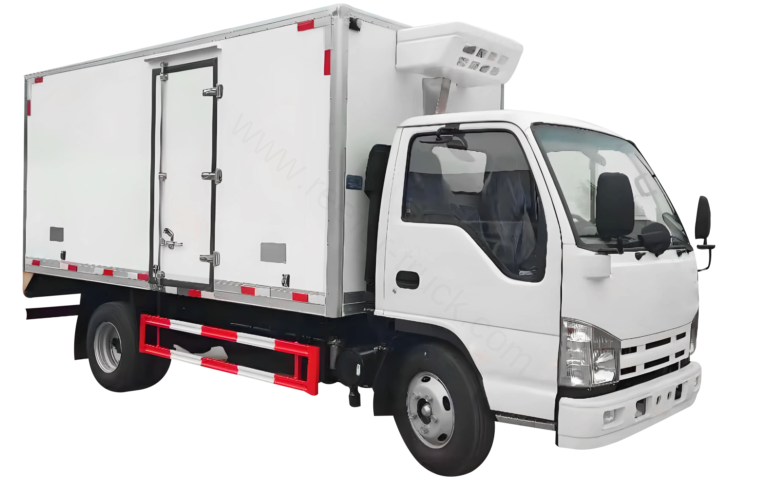Understanding Dry Freight Truck Bodies and Dry Box Trucks: A Comprehensive Guide

Strong 8k brings an ultra-HD IPTV experience to your living room and your pocket.
In the logistics and transportation industry, efficient and secure delivery of goods is paramount. One of the most essential assets in this space is the dry box truck, also referred to as a dry freight truck. These vehicles are widely used for transporting non-perishable goods across local and long-distance routes. Central to the performance of these trucks are dry freight truck bodies, which provide the enclosed cargo space necessary for safe, organized transportation.
This article explores the features, applications, benefits, and key considerations involved in choosing dry freight truck bodies and dry box trucks. Whether you are a fleet manager, a small business owner, or simply exploring logistics solutions, understanding the mechanics and options of these trucks can help you make more informed decisions.
What Are Dry Freight Truck Bodies?
Dry freight truck bodies are the rectangular, enclosed compartments mounted on the chassis of a truck. Designed to keep cargo protected from weather, theft, and damage, they are non-climate-controlled and best suited for dry, non-perishable freight such as furniture, electronics, clothing, and packaged goods.
These truck bodies are usually made from materials like aluminum, fiberglass-reinforced plywood (FRP), or composite panels. Depending on the build, they come in various sizes ranging from 10 to 28 feet in length. Inside, they often feature options like tie-downs, E-track systems, and interior lighting to secure and facilitate loading and unloading.
What Is a Dry Box Truck?
A dry box truck, also commonly called a box truck or cube van, is a type of commercial vehicle featuring a cab and an attached dry freight truck body. The dry box truck is designed to haul goods that do not require refrigeration or environmental control. These trucks are a mainstay in urban delivery fleets, regional shipping companies, and rental services like U-Haul.
Dry box trucks are often seen in a range of industries, including:
Retail distribution
Furniture delivery
Parcel and courier services
Moving companies
E-commerce fulfillment
Their versatility and ease of driving (some models are classified as non-CDL) make them a popular choice for businesses of all sizes.
Key Features of Dry Freight Truck Bodies
The durability and utility of a dry box truck largely depend on the quality and features of its dry freight truck body. Some of the key features include:
1. Construction Materials
Aluminum: Lightweight and corrosion-resistant, aluminum is a common material used for dry freight truck bodies. It's ideal for maximizing payload without compromising strength.
FRP (Fiberglass-Reinforced Plywood): Offers high impact resistance and is less likely to dent, making it a good choice for urban environments where contact with low branches or tight spaces is possible.
Composite Panels: These combine lightweight construction with excellent thermal and structural performance.
2. Interior Design
Plywood or lined walls: Protect cargo and make it easier to install shelving or tie-downs.
E-Track systems: Allow for flexible and secure cargo arrangements.
Rub rails and scuff plates: Prevent wall damage during loading and unloading.
3. Doors and Accessibility
Roll-up rear doors: Common for quick, frequent access.
Swing doors: Provide a wider opening for larger cargo.
Side doors: Optional for ease of access in tight delivery routes or urban areas.
4. Lighting and Safety
LED interior lighting: Enhances visibility inside the cargo area.
Reflectors and brake lights: Improve road safety during night driving or in poor visibility.
Benefits of Using Dry Box Trucks
Dry box trucks are a versatile, cost-effective solution for a range of freight transportation needs. Here are several benefits they offer:
1. Security and Protection
The enclosed design of dry freight truck bodies ensures goods are protected from theft, vandalism, and the elements. This makes them ideal for high-value merchandise and sensitive deliveries.
2. Cost-Effectiveness
Unlike refrigerated trucks, dry box trucks do not require specialized maintenance for cooling systems, reducing both operating and ownership costs.
3. Accessibility and Maneuverability
Most dry box trucks are easier to maneuver than semi-trailers, especially in urban environments. This is crucial for last-mile delivery routes.
4. Flexible Payload Capacity
With options ranging from small 10-foot trucks to large 28-foot configurations, companies can match the truck size to their specific hauling needs.
Choosing the Right Dry Freight Truck Body
Selecting the right dry freight truck body involves careful consideration of your business requirements. Key factors include:
1. Cargo Type and Volume
Evaluate the size, weight, and sensitivity of the goods you typically transport. For heavier items, reinforced floors and walls may be necessary. If you carry pallets, consider a body with a liftgate for easier loading.
2. Route Conditions
Urban delivery routes may require smaller, more agile trucks with side doors, while regional hauls might benefit from larger bodies with high-capacity payloads.
3. Fuel Efficiency
Lighter materials and aerodynamic designs contribute to better fuel economy. Aluminum and composite panels can help reduce overall vehicle weight.
4. Customization Options
Many manufacturers offer customizable features like:
Liftgates
Shelving and interior storage
Branding decals and graphics
GPS tracking systems
Leading Manufacturers of Dry Freight Truck Bodies
Some of the top names in the dry freight truck body manufacturing space include:
Morgan Corporation: Known for high-quality, customizable dry freight bodies with durable construction.
Supreme (a Wabash National company): Offers a wide range of box truck bodies with advanced features and lightweight materials.
Reading Truck Group: Specializes in utility and service bodies, including dry freight models.
Rockport Commercial Vehicles: Produces FRP and aluminum dry freight truck bodies suitable for a variety of industries.
Maintenance Tips for Dry Box Trucks
Keeping a dry box truck in optimal condition ensures safety, reliability, and long service life. Here are some maintenance best practices:
Inspect the roof and seals: Prevent leaks by checking seals and repairing damage promptly.
Lubricate door tracks and hinges: This helps prevent wear and tear on roll-up or swing doors.
Clean the interior: Regular cleaning helps detect wear or infestation early, especially if transporting goods with packaging.
Check lighting and reflectors: Functional lights are vital for road safety and legal compliance.
Future Trends in Dry Freight Transport
The dry freight transport sector is also evolving with technological advancements and regulatory changes:
Electric box trucks are becoming more common in urban delivery applications due to zero-emission regulations.
Telematics and fleet tracking systems allow operators to monitor truck performance, fuel usage, and driver behavior in real time.
Lightweight materials and aerodynamic design continue to be a focus, improving fuel efficiency and reducing emissions.
Conclusion
Dry freight truck bodies and dry box trucks are indispensable tools in the modern logistics chain. Their versatility, durability, and relative low cost make them a preferred choice for transporting dry goods across industries. By understanding the different types, materials, and features available, businesses can invest in a fleet that meets their operational needs while enhancing efficiency and customer satisfaction.
Whether you're expanding a delivery fleet or optimizing your transportation assets, choosing the right dry box truck with a high-quality dry freight truck body is a step toward reliable and scalable logistics success.
Note: IndiBlogHub features both user-submitted and editorial content. We do not verify third-party contributions. Read our Disclaimer and Privacy Policyfor details.







